Model Makeovers, Beauty, and Femininity
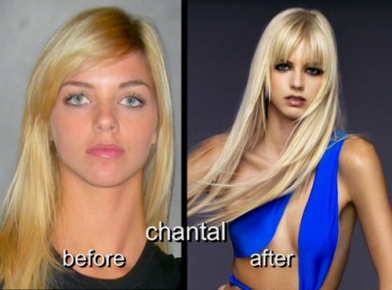 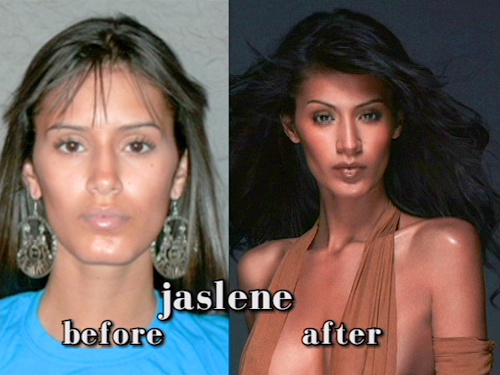
|
 
|
To be molded into the supermodel within, of course you have to forego an external overhaul. Every season of the show contains an episode focused on the model's makeovers. Scissors, dye, weave, and shampoo is everywhere and as to be expected some people are going to be adverse to change. The result makes for wonderful reality television as the girls cry about their previously blonde hair being red and what that means to their overall identity.
The winner of America's Next Top Model (ANTM) has a contract with the popular, commercial makeup line Covergirl. This is evident throughout the show, many of them being hour long commercials for Covergirl products. The continued popularity of this brand is increased through its connection to the television show. The viewer is taught that using the products from the show is natural. In lies the effects of discourse the actions of the consumer are influenced by the show. The show not only has an effect on what women purchase, but also what they strive to look like as women in our society. The viewer through discourse and the repetition of images the myth of the ideal woman.
The modeling industry is based off of outside appearance. These women are usually very tall and thin and are pretty even if not in stereotypical ways. The contestants represent the ideal of what a model should look like and what women should look like. The makeovers in the program reveal what makeup and hair products to use to look like these fashion models.
Femininity is often linked to long, flowing hair therefore some of the models who received short hair cuts did not know how to respond to this new physical identity. They felt that their persona was directly linked to the length of their hair. The first example was Cassandra from Cycle 5 who recieved a cut that resembled Mia Farrow in Rosemary's Baby. Cassandra, was very attached to her waist long, brown hair and the former Texas beauty queen did not feel like herself with her new hair cut. She was the first competitor to quit the show when Tyra decided she wanted the stylists to cut another inch off her hair. Her reasoning was that it "wasn't them just trying to cut another inch of hair, but was the last straw of them trying to change who she was" (Cycle 5, Episode 3). This model linked her identity and femininity to her hair. She is shown before and after below.
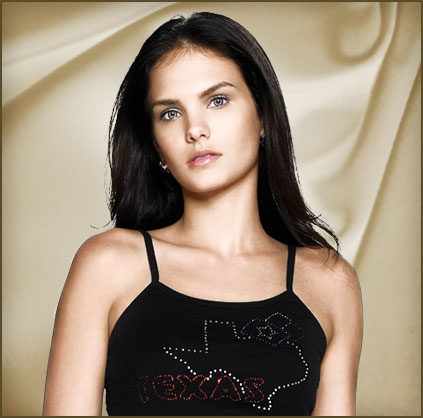
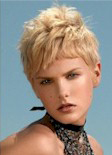
Another example of this same circumstance was Jaeda in Cycle 7.
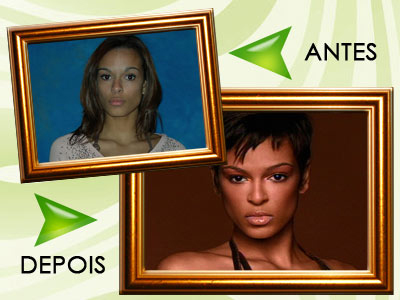
In her case she cried every episode about her hair and that she did not feel like a girl or pretty or sexy. She claimed that she did not know the person reflected back at her in the mirror. It is amazing how a haircut is meant to showcase the strength of these women's physical features yet they shut down and lose all semblance of self esteem. Both women looked amazing after their makeovers but both felt masculine and lost part of themselve due to their outward appearance. This reflects back on our society where it is commonplace for men to have short hair and women to have long locks.
As stated before there is a standard in the fashion industry (and in American society) of weight. Women are taught to take up less space in our society and one extension of that is to be extremely thin. When the public constantly sees these images of thin corresponding with beautiful it sends a powerful message. Models are ostracized for gaining weight or being categorized as 'plus-sized' which is the same as a size 9/10 in the real world. There have been only a handful of plus sized models on ANTM: Toccara (Cycle 3), Diana (Cycle 5), Whitney (Cycle 8), and currently Whitney (Cycle 10). In the current season, the models went on go-sees with clients and plus sized Whitney faced the same situation that other ANTM contestants in the plus sized category before her have faced...most designer sample sizes are a size 0 or 2. Designer Pamella Roland told Whitney that she would never hire her due to her size. Toccara was dressed as a parking attendant because they could not find anything that could fit her for the shoot. Diana had her breasts bound to the point to where she cried in her season. Few of the models gain weight while on the show, but in Cycle 4, Keenyah gained about 10 pounds. The entire audience heard about her unacceptable weight gain from Judge Janice Dickinson and also saw it in her costuming for the photo shoots.
Keenyah portrayed an elephant, constantly had her stomach covered, and in the shoot about the seven deadly sins was gluttony (shown in part below).
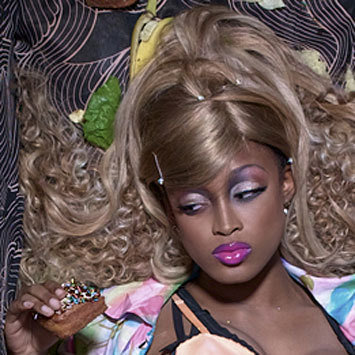
Through it all women watching the show learn how they are supposed to appear physically, and the public sees it as natural to be thin, have long hair, dress sexy, and wear a lot of (Covergirl) makeup. All of these qualities are seen as signifiers of femininity and beauty.